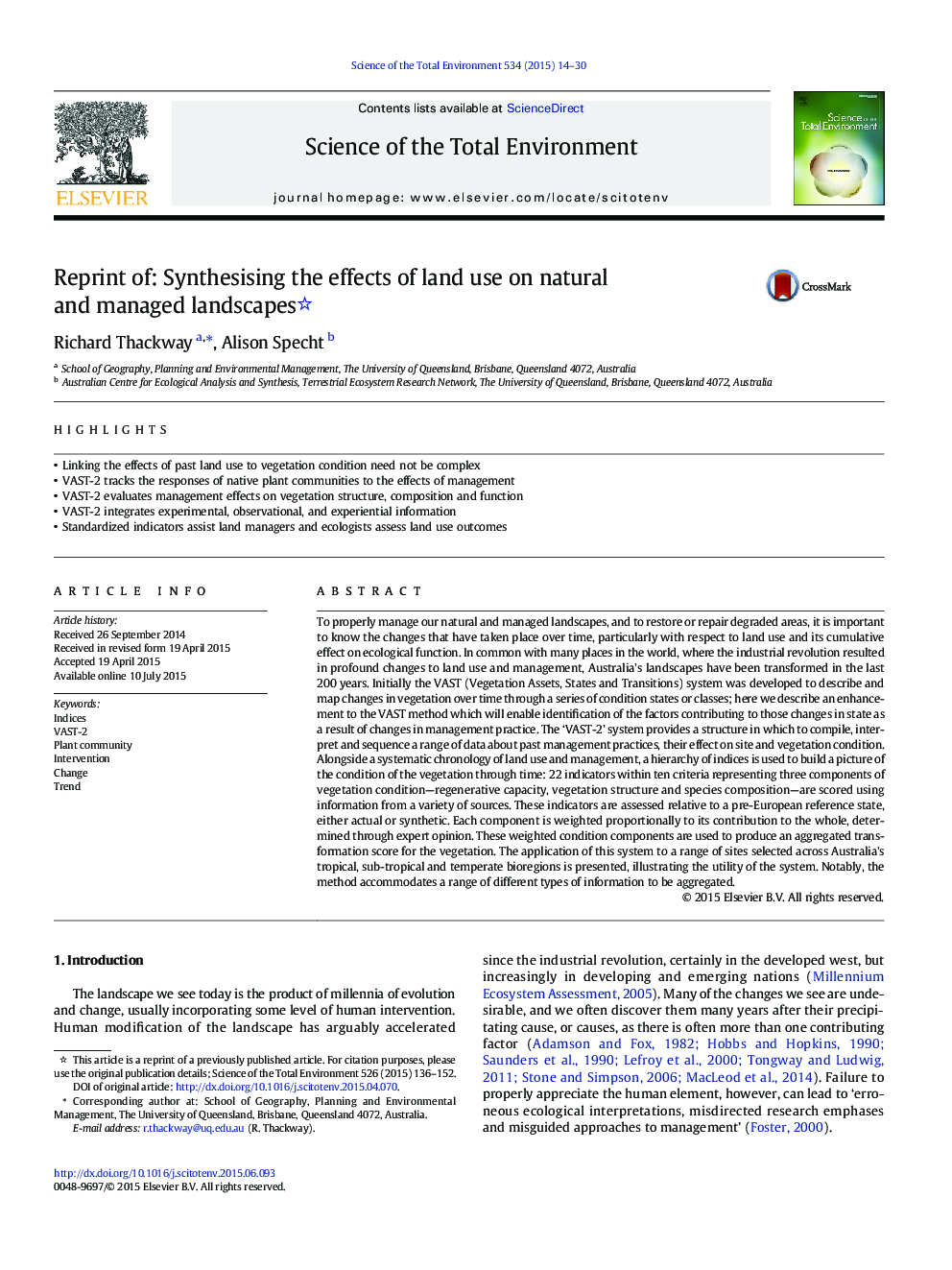| کد مقاله | کد نشریه | سال انتشار | مقاله انگلیسی | نسخه تمام متن |
|---|---|---|---|---|
| 4428331 | 1619750 | 2015 | 17 صفحه PDF | دانلود رایگان |
• Linking the effects of past land use to vegetation condition need not be complex
• VAST-2 tracks the responses of native plant communities to the effects of management
• VAST-2 evaluates management effects on vegetation structure, composition and function
• VAST-2 integrates experimental, observational, and experiential information
• Standardized indicators assist land managers and ecologists assess land use outcomes
To properly manage our natural and managed landscapes, and to restore or repair degraded areas, it is important to know the changes that have taken place over time, particularly with respect to land use and its cumulative effect on ecological function. In common with many places in the world, where the industrial revolution resulted in profound changes to land use and management, Australia's landscapes have been transformed in the last 200 years. Initially the VAST (Vegetation Assets, States and Transitions) system was developed to describe and map changes in vegetation over time through a series of condition states or classes; here we describe an enhancement to the VAST method which will enable identification of the factors contributing to those changes in state as a result of changes in management practice. The ‘VAST-2’ system provides a structure in which to compile, interpret and sequence a range of data about past management practices, their effect on site and vegetation condition. Alongside a systematic chronology of land use and management, a hierarchy of indices is used to build a picture of the condition of the vegetation through time: 22 indicators within ten criteria representing three components of vegetation condition—regenerative capacity, vegetation structure and species composition—are scored using information from a variety of sources. These indicators are assessed relative to a pre-European reference state, either actual or synthetic. Each component is weighted proportionally to its contribution to the whole, determined through expert opinion. These weighted condition components are used to produce an aggregated transformation score for the vegetation. The application of this system to a range of sites selected across Australia's tropical, sub-tropical and temperate bioregions is presented, illustrating the utility of the system. Notably, the method accommodates a range of different types of information to be aggregated.
Journal: Science of The Total Environment - Volume 534, 15 November 2015, Pages 14–30
